Suborder Phlebobranchia Phylum Chordata Rank Species | Subphylum Tunicata Scientific name Ciona intestinalis Higher classification Ciona Order Enterogona | |
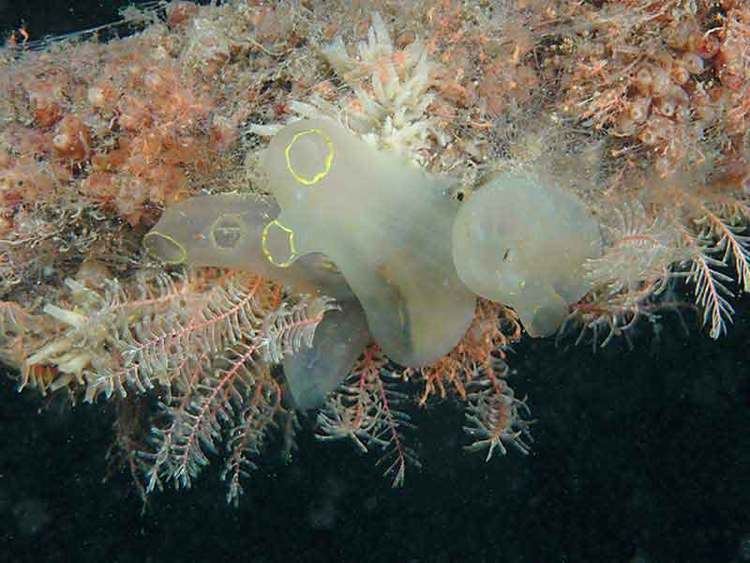 | ||
Similar Ciona, Ascidians, Tunicate, Chordate, Ciona savignyi | ||
Sea vase ciona intestinalis
Ciona intestinalis (sometimes known by the common name of vase tunicate) is an ascidian (sea squirt), a tunicate with very soft tunic. Its Latin name means, literally, "pillar of intestines", referring to the fact that its body is a soft, translucent column-like structure, resembling a mass of intestines sprouting from a rock. It is a globally distributed cosmopolitan species. Since Linnaeus described the species, Ciona intestinalis has been used as a model invertebrate chordate in developmental biology and genomics. Recent studies have shown that there are at least two, possibly four, sister species. By anthropogenic means, the species has invaded various parts of the world and is known as an invasive species.
Contents
- Sea vase ciona intestinalis
- Sea vase tunicate ciona intestinalis
- Appearance
- Ecology
- Sexual reproduction
- Hox genes
- References
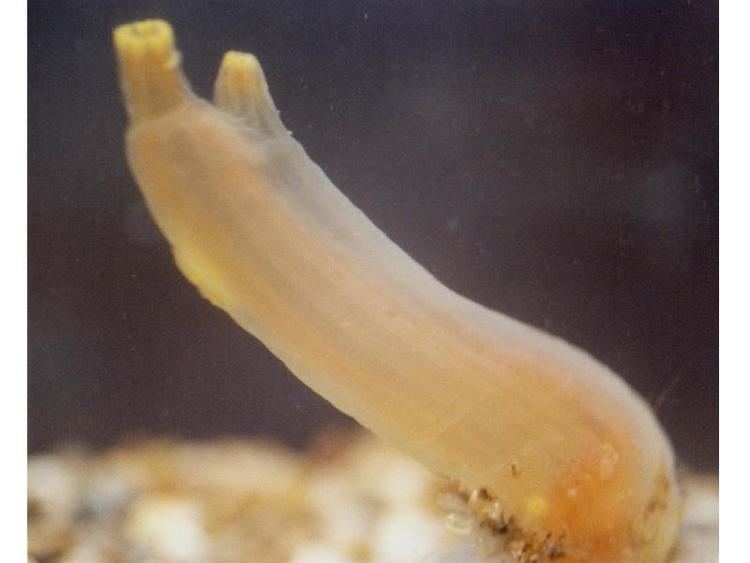
Although Linnaeus first categorised this species as a kind of mollusk, Alexander Kovalevsky found a tadpole-like larval stage during development that shows similarity to vertebrates. Recent molecular phylogenetic studies as well as phylogenomic studies support that sea squirts are the closest invertebrate relatives of vertebrates. Its full genome has been sequenced using a specimen from Half Moon Bay in California, USA, showing a very small genome size, less than 1/20 of the human genome, but having almost full sets of genes sharing almost all sets of genes but one copy for almost all genes.
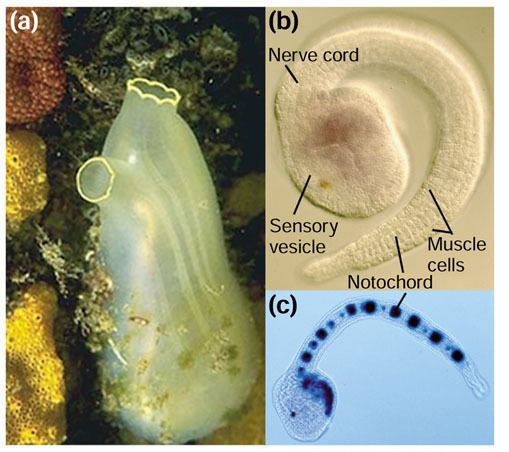
Sea vase tunicate ciona intestinalis
Appearance
Ciona intestinalis is a solitary tunicate with a cylindrical, soft, gelatinous body, up to 20 cm long. The body colour and colour at the distal end of siphons are major external characters distinguishing sister species within the species complex.
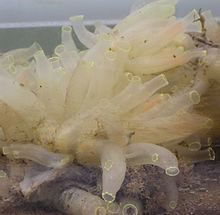
The body of Ciona is bag-like and covered by a tunic, which is a secretion of the epidermal cells. The body is attached by a permanent base located at the posterior end, while the opposite extremity has two openings, the buccal and atrial siphons. Water is drawn into the ascidian through the buccal (oral) siphon and leaves the atrium through the atrial siphon (cloacal).
Ecology
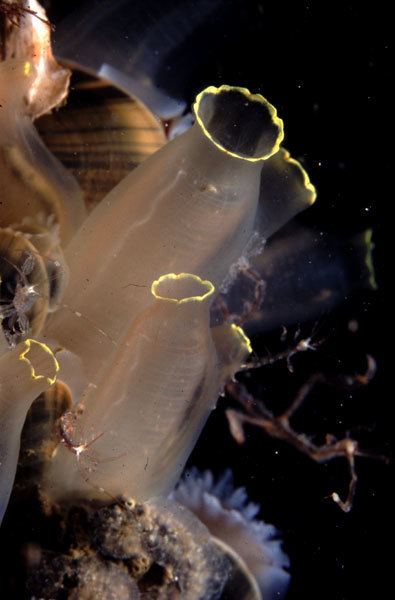
Ciona intestinalis is a hermaphroditic broadcast spawner but cannot self-fertilize. Eggs and sperm, when released, can stay in the water column for 1 to 2 days while the larvae are free-swimming for 2 to 10 days.
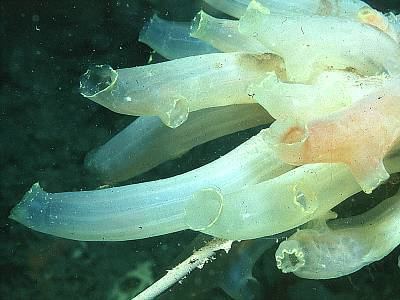
Ciona intestinalis is considered to be an invasive species and grows in dense aggregations on any floating or submerged substrate, particularly artificial structures like pilings, aquaculture gear, floats and boat hulls, in the lower intertidal to sub-tidal zones. It often grows with or on other fouling organisms. It is thought to spread to new areas mainly through hull fouling. Since its larvae can live for up to 10 days, this species may also be transferred through the release of bilge or ballast water.
To avoid spreading this organism, fish and shellfish harvesters should avoid transferring harvested shellfish and fishing gear to other areas. Gear should be thoroughly dried before transfer. Boat hulls should be inspected and, if necessary, thoroughly cleaned and disinfected with bleach or vinegar and dried before moving to other areas. Any organisms removed from boat hulls or gear should be disposed of on land. Bilge water should be released on land or disinfected.
Sexual reproduction
C. intestinalis is an hermaphrodite that releases sperm and eggs into the surrounding seawater almost simultaneously. C. intestinalis is self-sterile, and thus has been used for studies on the mechanism of self-incompatibility. Self/non-self-recognition molecules are considered to play a key role in the process of interaction between sperm and the vitelline coat of the egg. It appears that self/non-self recognition in ascidians such as C. intestinalis is mechanistically similar to self-incompatibility systems in flowering plants. Self-incompatibility promotes out-crossing which provides the adaptive advantage at each generation of masking deleterious recessive mutations (i.e. genetic complementation).
Hox genes
C. intestinalis was one of the first animals to have its full genome sequenced, in 2002. It has a relatively small genome (about 160 Mbp) consisting of 14 pairs of chromosomes with about 16,000 genes. The draft genome analysis identified nine Hox genes, which are Ci-Hox1, 2, 3, 4, 5, 6, 10, 12, and 13. Ciona savignyi, the closest relative of Ciona intestinalis, also have the same set of Hox genes. The organization of Hox genes is only known for C. intestinalis among ascidians. The nine Hox genes are located on two chromosomes; Ci-Hox1 to 10 on one chromosome and Ci-Hox12 and 13 on another. The intergenic distances within the Ciona Hox genes are extraordinarily long. Seven Hox genes, Ci-Hox1 to 10, are distributed along approximately half the length of the chromosome. Comparisons to Hox gene expression and location in other species suggests that the Hox genes in ascidian genomes are under a dispersing condition.
